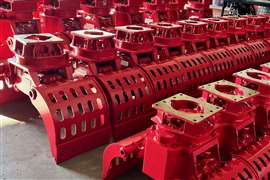Do younger construction workers understand the risks of asbestos?
13 April 2023
It’s now around two decades since several major economies banned the use of asbestos, as the world gradually woke up to the severe effects it can have on workers’ health.
 Greater contact with asbestos is an inevitable result of the EC’s focus on building renovation. (Photo: Ecology via Adobe Stock)
Greater contact with asbestos is an inevitable result of the EC’s focus on building renovation. (Photo: Ecology via Adobe Stock)
Construction workers are at particular risk of dying from mesothelioma – an otherwise rare form of cancer – after asbestos exposure.
In fact, a 2022 study by Italian researchers found that of 17,191 people in the country with malignant mesothelioma cases from 1993 until 2018, an average of 20.8% had worked in construction.
Worryingly, the trend for malignant mesothelioma among construction workers increased from 15.8% in the 1993-98 period, to 23.9% in 2014-18.
The also study warned that the large use of asbestos in construction before the ban makes the probability for exposure “a real concern still today”, particularly for those in the remediation and maintenance sectors.
But despite the continuing risks, there are concerns that younger construction workers don’t consider asbestos exposure to the something that their generation needs to worry about.
That problem is compounded by the fact that it can take many years – sometimes decades – after exposure before symptoms of mesothelioma or other asbestos-related diseases emerge.
“It is well known that younger workers are inexperienced with regard to identification of hazards and risk (not just asbestos) on site,” says UK-based health and safety expert Sean Maguire of RPP Architects, who provides advice to clients and construction professionals.
“They need to be informed and get the appropriate training on where asbestos may be found.
“And they should not start any work on a building of a certain age without asking if a refurbishment and demolition asbestos survey has been undertaken or reassured that the asbestos has been removed prior to the work commencing.”
Meanwhile, the European Construction Industry Federation (FIEC) has warned that workers’ exposure is likely to increase because it expects renovation work in Europe to increase over the coming years as buildings containing asbestos age.
UK regulator campaigns to raise awareness among younger workers
It’s to that end that Great Britain’s workplace health and safety regulator, the Health and Safety Executive (HSE) this month launched a new campaign, called ‘Asbestos & You’.
 Fibres of the mineral chrysotile asbestos taken from a host rock with tweezers (Image: Alexey via Adobe Stock)
Fibres of the mineral chrysotile asbestos taken from a host rock with tweezers (Image: Alexey via Adobe Stock)
It is aimed at millennials, generation Z workers who work in construction trades and who started their careers after 1999.
It comes as 5,000 people in the country still die from asbestos-related illnesses in the country. Asbestos was used extensively in the construction and maintenance of buildings from the 1950s until a ban in 1999.
HSE’s chief executive Sarah Albon said, “Asbestos exposure in Great Britain is still the single greatest cause of work-related deaths
“Everyone working in construction today, of any age, must take the risk from asbestos seriously.”
Maguire comments, “Any campaign that raises awareness that raises awareness of asbestos is welcome.”
And he warns, “Asbestos is not being managed and controlled by all property owners as required under the regulations and many contractors sub-contractors, operatives on sites are carrying out works without asking for or being told that there may be asbestos in the building and that they may disturb this during the works.”
Asbestos bans
Thanks to its properties as a good insulator, as well as offering good fire protection, and good corrosion protection, asbestos found its way into a huge range of building products, particularly in the 1950s, 1960s and 1970s.
In both industrial and residential properties, these included: sprayed coatings on walls, ceilings, beams and columns; asbestos cement water tanks; loose-fill insulation; ceiling tiles; vinyl floor tiles; lagging on pipes; and in cement roofs and cement cladding.
Many countries subsequently banned asbestos in construction products due to its harmful health effects.
But in some cases it has now been decades since those bans were enforced, meaning that younger generations of construction workers may not be aware of the risks in the same way as their older counterparts.
Here are some of the major countries that have banned asbestos and the dates of their bans:
- United Kingdom: Fully banned asbestos in November 1999. The UK had already banned the import and use of blue (Crocidolite) and brown (Amosite) asbestos in 1985. That ban was extended in 1999 to white asbestos (Chrysotile).
- Australia: Completely banned asbestos in December 2003.
- European Union: Banned asbestos in 2005, although some member states banned it well before then. Italy, for example, banned asbestos in 1992.
- Japan: Banned asbestos in 2006.
- Canada: Banned asbestos, whose production once played a major role in the economy, in 2018.
- South Africa: South Africa was a global leader in asbestos production and as a result its incidence of mesothelioma is among the highest in the world. It banned asbestos in 2008.
- United States: Asbestos is not completely banned at the federal level. But there has been a partial ban on asbestos since 1989, prohibiting the manufacture, import, processing and distribution of some asbestos-containing products. Some individual states have enacted stricter regulations. New Jersey was the first state to ban asbestos in 2018.
CONNECT WITH THE TEAM









